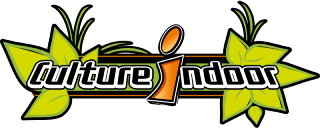Magnesium - everything you need to know for your plants
What does magnesium do for plants?
Magnesium is an essential element for plants as well as for humans and animals.
Magnesium in plants is a constituent of the green pigments of the leaves (chlorophyll).
Magnesium is therefore of crucial importance for photosynthesis.
Magnesium plays an important role in the various metabolic processes of the plant. Please note that both magnesium and calcium in tap water are responsible for the hardness of the water (e.g. hard water). Magnesium-based inorganic fertilizers are made from the same salts used for potassium-based fertilizers because, as we said in the potassium chapter, magnesium is essential for a good assimilation of NPK nutrition.
Magnesium for Dummies ;)
What is it and what does it mean for your crops and different methods?
Magnesium is an essential element for plants because it is of primary importance in the photosynthesis of plants.
For your different plants, magnesium is a constituent element of the green pigments of the leaves, chlorophyll.
What can we see on your plants and leaves?
Brown and rust colored stains.
Or rather nebulous yellow spots appearing between the veins of the leaves of your plants. See the chapter on plant deficiencies.
What can you do to fight against your magnesium deficiencies on your plants?
Spray with a 2% solution of epsomite (hydrated magnesium sulfate), and repeat every 4 to 5 days.
Detect magnesium deficiencies on your crops and their consequences.
A magnesium deficiency is often characterized by the rupture of the chloroplasts, the cellular organelles containing chlorophyll located in the middle of the old leaves under the terminal buds of your plants.
The magnesium is then transferred to the young shoots.
This deficiency is then characterized by rusty brown spots and/or the appearance of nebulous yellow spots called chlorosis between the veins of the leaves.
A small magnesium deficiency has little influence on flowering, although during this phase, the symptoms related to this deficiency may worsen, so watch and act if necessary in your crops.
During the first 3 to 4 weeks of your crops, the symptoms are not visible, the plant grows normally, it is dark green in color and looks healthy.
Symptoms appear between the fourth and sixth week during the flowering period.
For example, small rusty brown necrotic spots and or nebulous chlorosis in the middle of old leaves appear under the terminal buds of your plants. The color of the young leaves and fruits remains normal.
The size and proportion of rusty brown spots on your leaves increases over the whole leaf, and the chlorosis spreads with frankly yellow spots.
What to do?
Symptoms spread over the whole plant, which looks totally affected.
In the case of a severe magnesium deficiency, even the youngest leaves become chlorotic and flower production decreases.
How to act ?
For a proven magnesium deficiency, the best results are obtained by spraying a 2% solution of epsomite (hydrated magnesium sulfate). Buy magnesium sulfate called Epsom magnesium at 420 hydroponics or 420 organics, a 16% concentrated magnesium fertilizer that allows you to regulate magnesium deficiencies on your precious crops.
Fertilization at root level rather than spraying Anorganic by epsomite in hydroponics, kieserite on soil or compost. Organic with old decomposing cattle manure and turkey manure rich in magnesium.
Magnesium deficiency is more frequent than other deficiencies. In fact, this magnesium deficiency in the root can also occur with normal or very high magnesium content, simply because the absorption of magnesium is hindered by all sorts of circumstances that are difficult to control.
Circumstances:
- A very wet, cold and/or acid soil can cause this magnesium deficiency on your plants.
- High potassium, ammonium and or calcium content because too much lime in the tap water or clay soil rich in lime compared to the magnesium content can also create magnesium deficiency.
- Limited or poorly developed roots and high stress on the plant.
- A high EC-value (nutrition values obtained with an ec meter platinum for example) in the medium, reduced evaporation and therefore a less good development on your plants.
The ideal is to use a fertilizer as a Sensistar Grow and Bloom a unique concept allowing to assemble a complete fertilizer with balanced NPK +calcium +magnesium +oligos EDTA chelated elements of very high performance, the best gel fertilizer with unique nanotechnology and which is ahead of its competitors by results defying all competition, their slogan stop buying water buy a real fertilizer, think about it and stop buying water try a range of fertilizers, more efficient and economical, amplify the result of your crops, for more fruits to consume!


